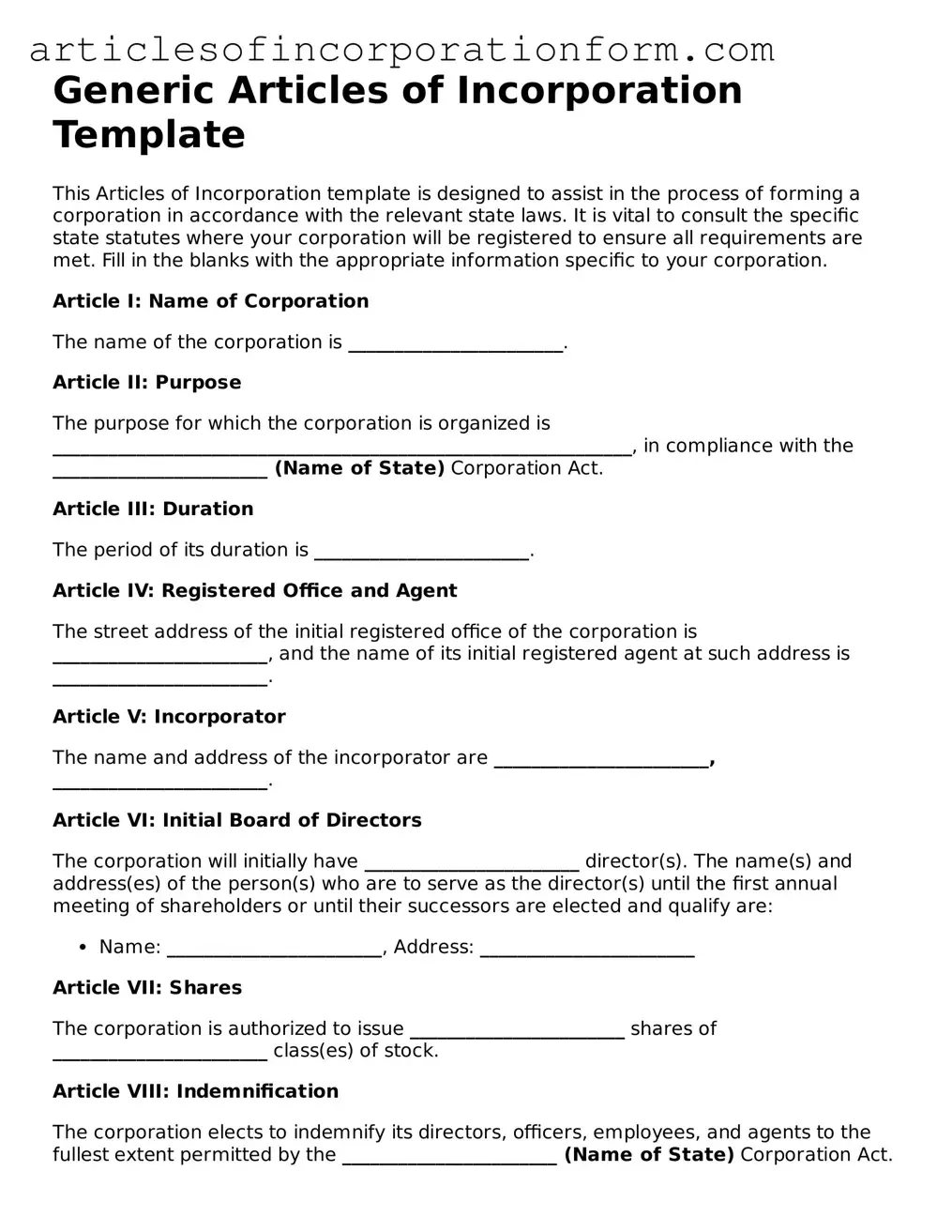Generic Articles of Incorporation Template
This Articles of Incorporation template is designed to assist in the process of forming a corporation in accordance with the relevant state laws. It is vital to consult the specific state statutes where your corporation will be registered to ensure all requirements are met. Fill in the blanks with the appropriate information specific to your corporation.
Article I: Name of Corporation
The name of the corporation is _______________________.
Article II: Purpose
The purpose for which the corporation is organized is ______________________________________________________________, in compliance with the _______________________ (Name of State) Corporation Act.
Article III: Duration
The period of its duration is _______________________.
Article IV: Registered Office and Agent
The street address of the initial registered office of the corporation is _______________________, and the name of its initial registered agent at such address is _______________________.
Article V: Incorporator
The name and address of the incorporator are _______________________, _______________________.
Article VI: Initial Board of Directors
The corporation will initially have _______________________ director(s). The name(s) and address(es) of the person(s) who are to serve as the director(s) until the first annual meeting of shareholders or until their successors are elected and qualify are:
- Name: _______________________, Address: _______________________
Article VII: Shares
The corporation is authorized to issue _______________________ shares of _______________________ class(es) of stock.
Article VIII: Indemnification
The corporation elects to indemnify its directors, officers, employees, and agents to the fullest extent permitted by the _______________________ (Name of State) Corporation Act.
Article IX: Incorporator's Signature
The undersigned incorporator hereby confirms that the information provided in these Articles of Incorporation is true and accurate, and that all state-specific requirements will be abided by in the operation of the corporation.
__________________________________
Signature of Incorporator
Date: ___________________________
Note: This template is a general guideline and needs to be customized according to the specific requirements of the state in which the corporation is being formed. It is recommended to seek legal advice to ensure compliance with all state-specific regulations.
